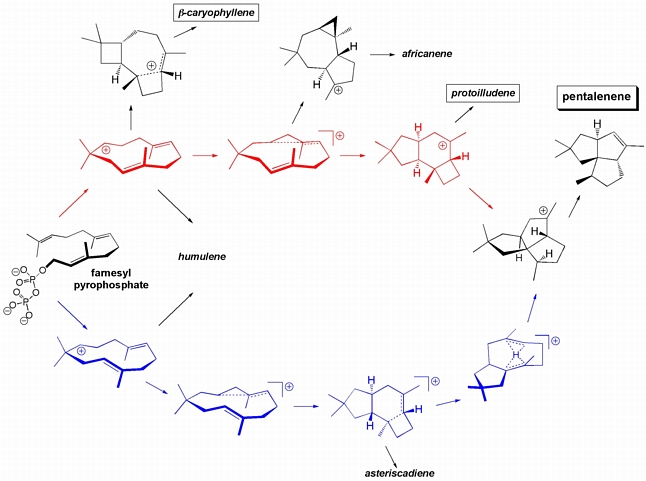

Nature makes a wide range of complex, stereodense molecules starting with only a few acyclic terpenes (molecules constructed from isoprene units) such as farnesyl pyrophosphate (shown above). Many details of the complicated mechanisms that Nature uses to convert farnesyl pyrophosphate into complex terpenoid natural products such as pentalenene (above) remain to be uncovered. We are using computational quantum chemistry to study the mechanisms of these reactions, both in the presence and absence of enzyme catalysts.
We find two distinct pathways for pentalenene formation (above), each differing from previous mechanistic proposals, and each involving unusual and unexpected intermediates. Diversions from these pathways lead readily to caryophyllene, humulene, africanene, protoilludene, and asteriscadiene via deprotonation, indicating that a key function of pentalenene synthase is to regulate the timing and location of proton removal.
Gutta, P.; Tantillo, D. J. Angew. Chem. Int. Ed. 2005, 44, 2719-2723: "Proton Sandwiches: Nonclassical Carbocations with 4-Coordinate Protons." This article was highlighted in the "Science Concentrates" section of the May 2, 2005 issue of C&EN.